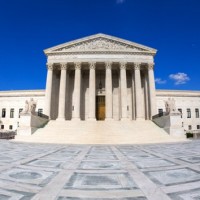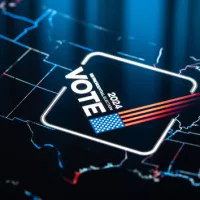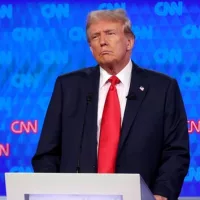
 iStock/Thinkstock(WASHINGTON) — The nation’s highest court will hear arguments Monday in the case of the United States v. Texas.
iStock/Thinkstock(WASHINGTON) — The nation’s highest court will hear arguments Monday in the case of the United States v. Texas.
Texas — along with a number of other states — is challenging President Obama’s effort to, among other things, allow millions of undocumented immigrants to remain in the country.
A lower court blocked the action, which was announced in 2014, so the programs have not taken effect and their future remains in limbo as the Supreme Court hears the case.
It’s a complex issue with very real human and political implications.
So Kate Shaw, an ABC News contributor and an assistant professor of law at the Benjamin N. Cardozo School of Law in New York, will help explain what you need to know.
1) Let’s set the stage. What presidential action is the plaintiff, aka “Texas,” challenging? What did Obama basically intend to do? Who would be affected?
SHAW: This case involves the administration’s 2014 announcement that it intends to grant “deferred action” — essentially, temporary relief from the threat of deportation — to millions of people living in the United States without legal status. The program would mainly apply to parents of U.S. citizens or lawful permanent residents. (That’s why it’s commonly known as “DAPA” – “Deferred Action for Parents of Americans and Lawful Permanent Residents.”)
But the announcement also expands an earlier deferred-action initiative that applies to people who came to the United States as children (that one is referred to as “DACA” – “Deferred Action for Childhood Arrivals”).
The administration argues that recipients of “deferred action” don’t receive lawful immigration status; they’re just notified that they’re not a deportation priority, so they can, in the administration’s words, “come out of the shadows,” and do things like apply for work authorization. Most estimates place the number of potentially affected individuals at 4 million or more.
2) What’s the core of the challenge to this plan? And how does Obama defend it?
SHAW: The states, joined by the House of Representatives (which will share argument time today), make a few arguments. They claim that the plan conflicts with the existing immigration statutes, unilaterally granting legal status to individuals who are here unlawfully under existing immigration law; they also argue that the administration should have announced the new policy through a formal “notice-and-comment” rulemaking process. And, after the Supreme Court specifically asked them to address this question, they argue that the plan is unconstitutional; that by crafting this plan the president has failed to “Take Care that the laws be faithfully executed.”
The administration responds, first, that Texas has no right to be in court attacking this policy in the first place. It also argues that the plan is well within the discretion Congress has granted the executive branch to set immigration priorities, and that the administration is just deciding how best to use its limited enforcement resources; that it was entitled to use the processes it did to announce the program; and that it is plainly constitutional.
3) Broadly, what are the potential outcomes of this case and the real-life impact?
SHAW: If the court strikes down the program, that will essentially spell the end of any meaningful action on immigration in this administration. If, however, the court decides either that Texas has no “standing” to be in court, or that the program is lawful, the administration will likely begin rolling the program out quickly (though another challenge is certainly conceivable).
4) With former Justice Antonin Scalia’s seat left empty, there could be a tie. What happens in that case?
SHAW: A 4-4 tie is a definite possibility, and a tie in this case would leave the law in a state of profound uncertainty. (For that reason, I think the Justices will work very hard to avoid a tie if they can find common ground.) A 4-4 tie technically just affirms the lower court decision, so it usually doesn’t make law outside of the circuit that produced the opinion being reviewed.
But here the lower court issued a nationwide injunction, which means it said the administration’s program couldn’t go into effect anywhere in the country. There are a few ways the case could conceivably come before the court again, but it’s hard to see it happening during this administration. So a 4-4 tie likely means any action on immigration is in the hands of the next president.
5) When might the court issue a ruling and any indication as to how they might rule?
SHAW: The court is almost certain to rule by the end of June. This is a complex case with a number of moving parts —and it’s already April, which is late in the Supreme Court’s term — so it’s likely to be one of the last decisions issued this term.
ABC Breaking News | Latest News Videos
Copyright © 2016, ABC Radio. All rights reserved.















